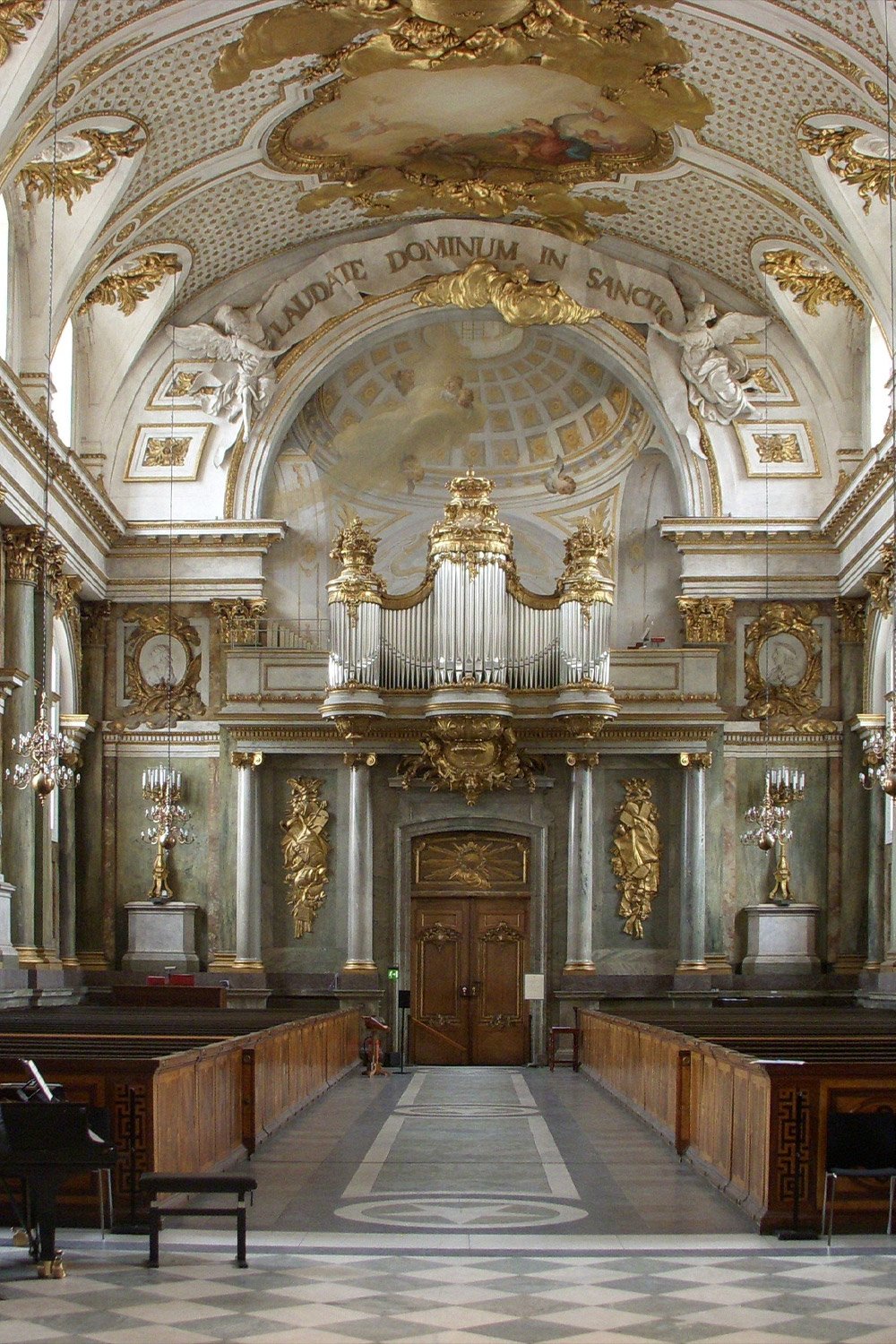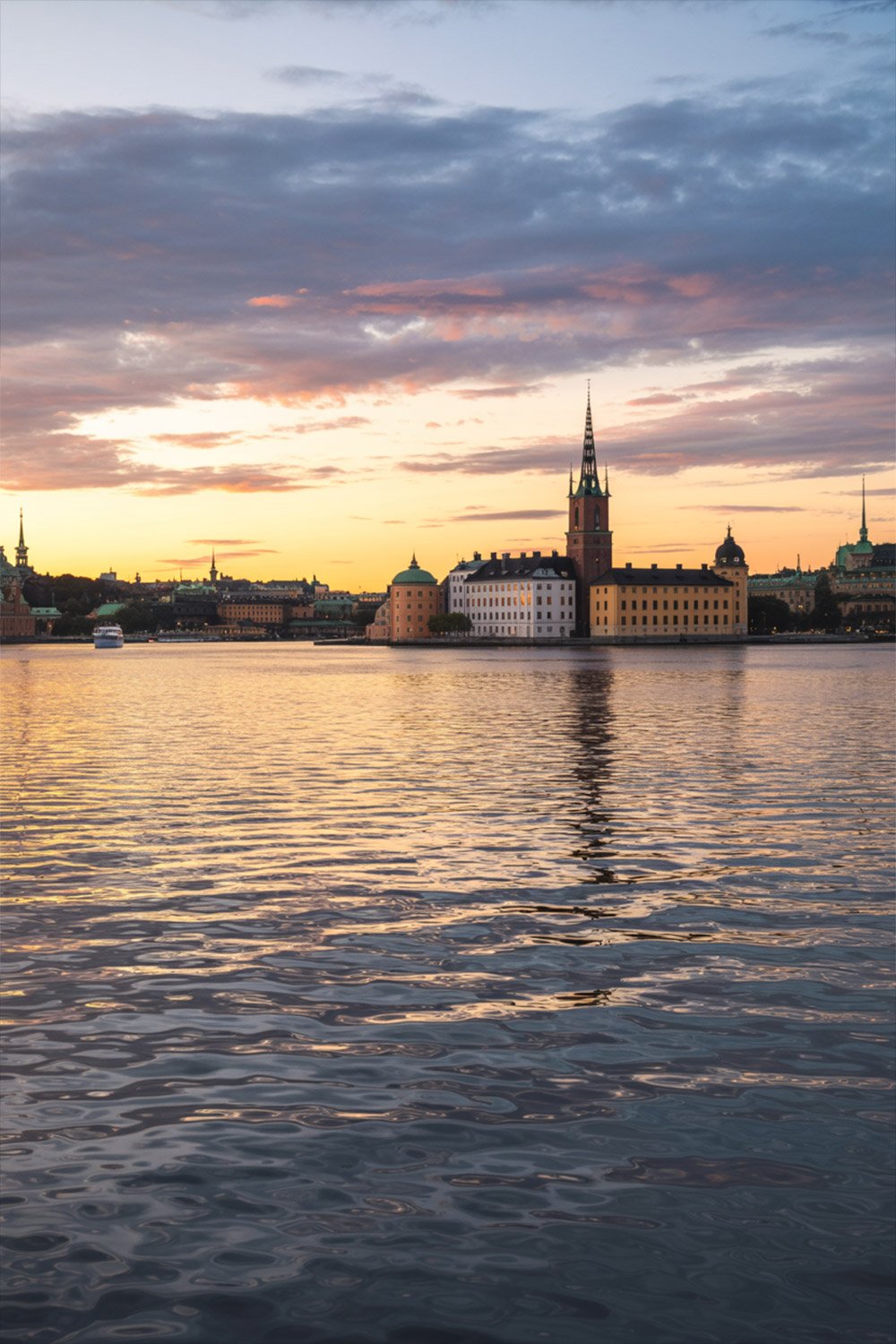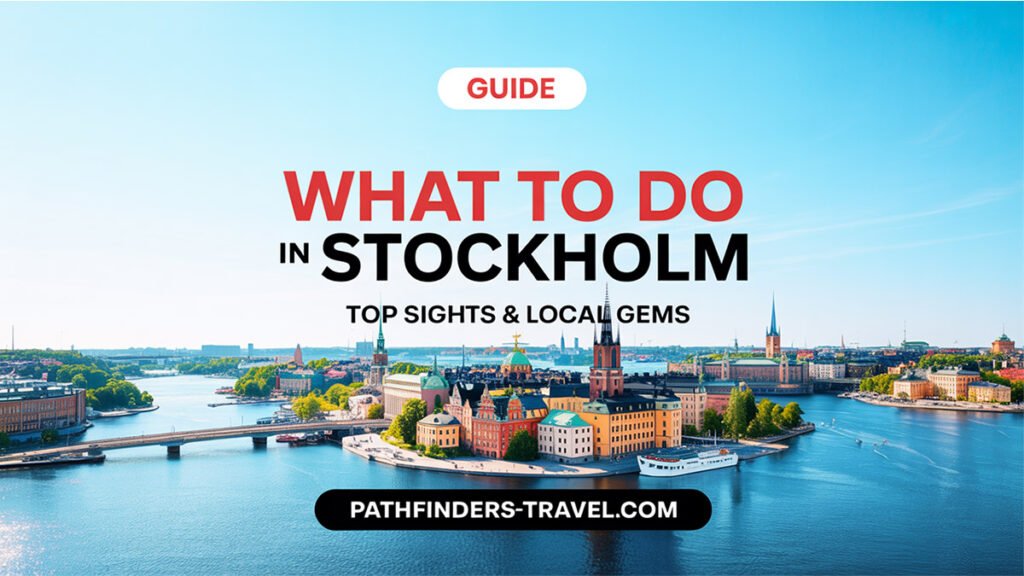Estimated reading time: 15 minutes
Key Takeaways
- Stockholm’s Gamla Stan offers medieval charm with cobblestone streets, colorful buildings, and historical landmarks like the Royal Palace and Stockholm Cathedral.
- The Royal Palace stands as one of Europe’s largest palaces, featuring grand State Apartments and the impressive Royal Chapel.
- The Vasa Museum houses a remarkably preserved 17th-century warship that sank on its maiden voyage.
- The trendy Södermalm neighborhood provides a contrast to historic Stockholm with its artistic vibe, boutique shops, and vibrant cafés.
- Stockholm’s efficient public transit system makes it easy to navigate between the city’s diverse attractions.
Table of Contents
- Introduction
- Stockholm’s Old World Charm: Gamla Stan
- Royal Splendor: The Royal Palace
- Maritime Marvels: The Vasa Museum
- Trendy Urban Vibes: Södermalm
- Practical Travel Tips
- Frequently Asked Questions for Visiting Stockholm
- Conclusion
Introduction to What to Do in Stockholm
Welcome to Stockholm, an enchanting Scandinavian capital that captivates visitors with its distinctive island setting and timeless appeal. If you’re wondering what to do in Stockholm, you’ve come to the right place. This vibrant city offers a perfect blend of historical charm and cutting-edge innovation, making it an ideal destination for travelers seeking both cultural depth and modern experiences.
Spread across 14 islands connected by 57 bridges, Stockholm presents a unique landscape where water is as much a part of the city as its buildings and streets. From the medieval streets of Gamla Stan to the trendy shops of Södermalm, Stockholm offers a rich tapestry of experiences that cater to all types of travelers [SOURCE].
Want to see this for yourself? Click here to watch the video from this point.
Stockholm Old Town Gamla Stan Guide
Stockholm old town Gamla Stan
When visiting Stockholm, your journey should begin in Gamla Stan, the city’s Old Town and one of Europe’s best-preserved medieval districts. Dating back to the 13th century, this historic area invites you to step back in time as you wander along narrow cobblestone streets flanked by well-preserved buildings painted in characteristic mustard and rust colors [SOURCE].
The heart of Gamla Stan lies in its central square, Stortorget. Surrounded by old merchant houses, this picturesque plaza serves as the perfect starting point for exploring the district. The colorful buildings that frame the square create a postcard-perfect scene that changes with the light throughout the day.
Just steps away stands the Royal Palace, an impressive baroque structure that dominates the northeastern corner of Gamla Stan. As one of Europe’s largest palaces, it serves as both a historical monument and the official residence of the Swedish monarch [SOURCE].
Nearby, the Stockholm Cathedral (Storkyrkan) stands as a testament to Gothic architecture and royal heritage. This historic church has witnessed numerous royal weddings and coronations throughout Swedish history. Its interior features remarkable artworks, including the famous wooden statue of Saint George and the Dragon.
For those interested in history and innovation, the Nobel Prize Museum offers fascinating insights into the world’s most prestigious award and the brilliant minds behind groundbreaking discoveries. Interactive exhibits tell the stories of Nobel laureates and their contributions to humanity.
As you explore Gamla Stan’s winding streets, you’ll discover cozy cafés and shops tucked into centuries-old buildings. Take time to sample traditional Swedish treats like kanelbullar (cinnamon buns) or prinsesstårta (princess cake) at local bakeries. Boutique shops offer everything from handcrafted souvenirs to Swedish design pieces, perfect for bringing a piece of Stockholm home with you.
The best time to visit Gamla Stan varies with the seasons. Summer brings vibrant energy to the streets, with outdoor cafés, street performers, and the daily Changing of the Guard ceremony at the Royal Palace. Winter transforms the district into a magical setting, especially during the holiday season when Christmas markets fill Stortorget with twinkling lights, handcrafted gifts, and the aroma of mulled wine [SOURCE].
For a deeper understanding of Gamla Stan’s rich history, consider joining a guided walking tour. Local guides share stories of the district’s past, from tales of medieval merchants to legends of ghosts that supposedly haunt the ancient streets. These tours provide context that brings the old stones and buildings to life.
Royal Palace Stockholm Tour and History

Royal Palace Stockholm tour
The Royal Palace of Stockholm stands as one of Europe’s most magnificent royal residences and a central landmark in Sweden’s capital. Built in Italian Baroque style during the 18th century, this impressive structure contains over 600 rooms spread across seven floors. Today, it serves as the official residence of the Swedish monarch and hosts important state ceremonies and receptions [SOURCE].
A tour of the palace offers visitors a glimpse into Sweden’s royal history and the current functioning of the monarchy. The State Apartments showcase lavish interiors decorated with priceless art, antique furniture, and elaborate ceiling paintings. These grand rooms continue to host diplomatic receptions, award ceremonies, and other official events.
The Royal Chapel stands as another highlight of any palace visit. With its ornate baroque styling and rich historical significance, this sacred space has witnessed countless royal events, including weddings and christenings. Its beautiful organ and intricate decorations make it a must-see even for those not typically drawn to religious sites.
Beyond these main attractions, the palace houses several museums worth exploring. The Treasury displays the Swedish royal regalia, including crowns, scepters, and ceremonial swords dating back centuries. The Tre Kronor Museum preserves the history of the medieval castle that once stood on this site before a devastating fire in 1697.
For the best visiting experience, consider these practical tips. Purchase your tickets online in advance to avoid long queues, especially during the busy summer months. The palace offers guided tours in several languages, providing deeper insights into the history and function of different rooms and artifacts.
Time your visit to coincide with the Changing of the Guard ceremony, which takes place daily at 12:15 PM (12:45 PM on Sundays and holidays). This colorful military tradition features uniformed guards and, during summer months, often includes a military band and mounted cavalry.
After exploring the palace, take advantage of its central location to visit nearby attractions. The palace sits at the edge of Gamla Stan, making it easy to continue your journey through Stockholm’s historic district. Consider stopping at the Stockholm Cathedral just steps away or exploring the narrow medieval streets that surround this royal landmark.
Top Picked Activities in Stockholm
Vasa Museum Stockholm Guide to the 17th-Century Warship
Vasa Museum Stockholm guide
The Vasa Museum houses one of Stockholm’s most remarkable treasures and stands as one of the city’s must-visit attractions. At its heart is the Vasa warship, an almost fully intact 17th-century vessel that sank on its maiden voyage in 1628 and was salvaged from Stockholm harbor after spending 333 years underwater [SOURCE].
The story of the Vasa is both fascinating and cautionary. Built as a symbol of Sweden’s military might during its time as a great power, the ship was top-heavy and unstable. It sailed barely 1,300 meters before a gust of wind caused it to heel over and sink in full view of thousands of spectators who had gathered to witness its departure. The cold, brackish waters of Stockholm harbor preserved the ship remarkably well, protecting it from the shipworms that typically destroy wooden wrecks.

Today, the vessel stands as the world’s only preserved 17th-century ship and offers visitors an unparalleled look at naval architecture, shipbuilding techniques, and life at sea during this period. The museum built around the ship showcases not only the vessel itself but also tells the story of its construction, sinking, and eventual recovery in 1961.
When planning your visit, allow at least two hours to fully appreciate what the museum has to offer. The Vasa Museum is open daily year-round, with extended hours during summer months. The main exhibit halls surround the ship, allowing visitors to view the massive vessel from multiple angles and levels.
Beyond the ship itself, the museum features ten exhibition areas that provide context and deeper understanding. These include displays about life on board, the historical period in which the Vasa sailed, and the painstaking conservation work that continues to preserve this unique artifact. Many of the objects found with the ship—from sailors’ possessions to wooden sculptures that once adorned the vessel—are also on display.
The museum is located on Djurgården, an island that forms part of the Stockholm archipelago and houses several other notable attractions. After exploring the Vasa, you might continue your day by visiting the nearby Skansen (the world’s oldest open-air museum), the ABBA Museum, or simply enjoying the island’s beautiful parklands.
For photography enthusiasts, capturing the enormous ship presents both challenges and opportunities. The museum’s lighting is purposefully dim to protect the ancient wood, so be prepared to adjust your camera settings accordingly. A wide-angle lens helps capture the ship’s impressive scale, while focusing on details like the intricate carvings offers compelling close-up shots.
Södermalm Neighborhood Guide in Stockholm
Södermalm neighborhood guide
After exploring Stockholm’s historical treasures, shift your focus to Södermalm, the city’s trendy southern island that offers a striking contrast to the medieval charm of Gamla Stan. Once a working-class area, “Söder” as locals call it, has transformed into Stockholm’s creative hub, filled with artistic energy, independent shops, and a relaxed yet vibrant atmosphere [SOURCE].
The neighborhood’s artistic character is immediately apparent through its street art and creative spaces. Colorful murals adorn building walls, particularly around the Hornstull and Slussen areas. These artistic expressions reflect the district’s reputation as a center for Stockholm’s creative community, hosting numerous galleries, studios, and design collectives.
Södermalm’s dining scene offers something for every taste and budget. Start your day at one of the many local cafés where Stockholm’s coffee culture thrives. The area around Mariatorget square features several cozy spots perfect for fika, the Swedish coffee break tradition. For lunch or dinner, explore the diverse options ranging from traditional Swedish cuisine to international fusion restaurants. The SoFo area (South of Folkungagatan) particularly stands out for its concentration of quality eateries.
Shopping in Södermalm is a delight for those seeking unique items away from mainstream brands. Boutique shops line streets like Götgatan and Hornsgatan, offering everything from vintage clothing and secondhand treasures to cutting-edge Swedish design. The area has become synonymous with Stockholm’s fashion-forward identity, hosting independent designers who create pieces you won’t find elsewhere.
For spectacular views of Stockholm, head to Monteliusvägen, a walking path along Södermalm’s northern ridge. This 500-meter stretch offers panoramic vistas of Gamla Stan, Riddarholmen, and City Hall across the water. The view is particularly stunning at sunset when the evening light bathes the city in a golden glow.

A well-planned day in Södermalm might begin with breakfast at a local café, followed by shopping and gallery-hopping in the SoFo district. For lunch, try one of the innovative restaurants that showcase Nordic ingredients with modern techniques. In the afternoon, wander up to Monteliusvägen for those iconic city views, then perhaps finish with dinner at a neighborhood restaurant before experiencing Södermalm’s low-key but lively nightlife.
The beauty of exploring Södermalm lies in its walkable scale and distinct sub-neighborhoods, each with its own character. Allow yourself time to wander without a strict itinerary—some of the best discoveries come from turning down an interesting side street or following a local recommendation. This approach captures the authentic spirit of this neighborhood, where creativity and spontaneity flourish.
Practical Travel Tips
Getting around Stockholm efficiently is key to maximizing your experience in this island city. The public transportation system ranks among Europe’s best, with an extensive network of metro lines (Tunnelbana), buses, and ferries that connect all major districts and attractions [SOURCE].
The metro system deserves special mention not only for its efficiency but also for its artistic value. Often called “the world’s longest art gallery,” Stockholm’s subway stations feature installations, sculptures, mosaics, and paintings by over 150 artists. Stations like T-Centralen, Kungsträdgården, and Solna Centrum are worth visiting just to admire their stunning designs.
For convenient travel, purchase an SL Access card, which can be loaded with single tickets or travel passes valid for 24 hours, 72 hours, or 7 days. These cards work across all forms of public transport and offer significant savings compared to buying individual tickets. They’re available at SL Centers, metro stations, and many convenience stores throughout the city.
Walking tours provide an excellent way to discover Stockholm’s diverse neighborhoods. Gamla Stan and Södermalm particularly reward on-foot exploration, with their narrow streets and hidden courtyards that aren’t accessible by vehicle. Several companies offer guided walking tours focused on different themes, from history and architecture to food and photography.
Stockholm is also remarkably bike-friendly, with dedicated cycling lanes throughout much of the city. Rental shops like Gamla Stans Cykel offer bikes by the hour or day, providing a flexible and enjoyable way to cover more ground than walking while still experiencing the city at a leisurely pace. The city’s bike-sharing program offers another option during the warmer months.
When planning your itinerary, strive for balance between Stockholm’s historical and modern attractions. A good approach is to alternate between different types of experiences—perhaps visiting the Royal Palace in the morning, followed by lunch in trendy Södermalm, then an afternoon at the Vasa Museum. This variety prevents “museum fatigue” and gives you a more rounded impression of the city.
For booking resources, use official websites whenever possible. The Royal Palace (www.kungligaslotten.se) and Vasa Museum (www.vasamuseet.se) both offer online tickets that can save you time waiting in line. The official tourism website, Visit Stockholm, provides up-to-date information on attractions, events, and practical matters like opening hours.
If your schedule allows, consider a day trip to Stockholm’s archipelago. Regular ferries depart from Strömkajen in the city center, offering access to islands like Vaxholm, Grinda, or Sandhamn. Even a half-day excursion provides a refreshing contrast to urban sightseeing and showcases the natural beauty that surrounds Stockholm.

Frequently Asked Questions for Visiting Stockholm
What is the best time of year to visit Stockholm for sightseeing and outdoor activities?
The ideal time to visit Stockholm for sightseeing and outdoor activities is during the summer months, especially from June to August, when daylight is abundant and temperatures are pleasantly warm—perfect for biking in Djurgården, kayaking the archipelago, or relaxing at outdoor cafés. However, be aware that it’s also the peak tourist season, so expect larger crowds. Off-season visits offer a quieter experience and often more atmospheric settings.
How safe is Stockholm for solo travel and first-time visitors?
Stockholm is widely considered very safe for visitors, making solo travel and first-time visits reassuring and comfortable. Its public spaces, efficient transit, and well-lit neighborhoods contribute to a reassuring sense of security. Travelers typically report feeling both comfortable and secure exploring the city.
What should I pack for Stockholm depending on the season and weather?
In summer, pack light, breathable clothing for warm days but include layers for cooler evenings and sudden weather changes. In winter, bundling up is essential: include thermals, a warm jacket, gloves, a hat, and sturdy footwear. In all seasons, a compact umbrella, moisturizer, and lip balm can be lifesavers for changing weather.
Is Stockholm expensive and what are some budget travel tips?
Stockholm can be pricey, particularly for dining and accommodations, but budget travel tips include staying outside the city center and using public transit. To save, consider staying in neighborhoods like Kungsholmen or just outside the inner city, which are well-connected by efficient public transport. Choose fish or seafood for more cost-effective dining, take advantage of generous hotel breakfast buffets, and always compare prices before booking your ferry or tour activities.
What is the best way to get around Stockholm?
Getting around Stockholm is easy and enjoyable thanks to its world-class public transport system. Use the unified SL network—metro, buses, trams, commuter rail, and ferries—with a single ticket or SL Access card. Download the SL app for seamless digital ticketing. The airport-to-city connections are fast thanks to rail and bus options, while the metro—also known as the “world’s longest art gallery”—provides both transit and sightseeing in one.
Conclusion
Stockholm combines layers of history, culture, and natural scenery within a compact and walkable setting. The medieval streets of Gamla Stan, the ceremonial grandeur of the Royal Palace, and the maritime legacy of the Vasa Museum highlight the city’s deep heritage. In contrast, Södermalm offers a modern, creative edge with its street art, boutiques, and panoramic viewpoints.
Exploring Stockholm is made easier by its excellent public transport system and its layout across islands linked by bridges. Whether you plan a short city break or include Stockholm in a broader Scandinavian itinerary, the balance of old and new creates a rewarding experience for travelers.
For those interested in extending their journey, nearby destinations such as Oslo in Norway and the wider Scandinavian region provide natural connections to this guide. Together, they showcase the diversity and richness of Northern Europe.
We hope this guide supports your planning and inspires a thoughtful trip to Sweden’s capital. For more destination insights and 4K travel documentaries, visit Pathfinders Travel on YouTube.



